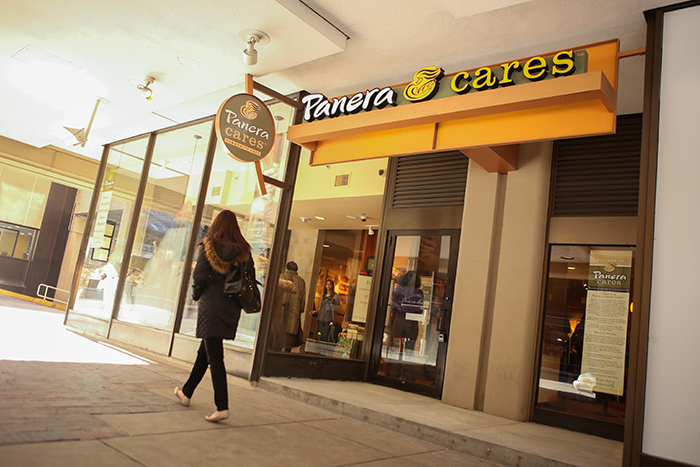
What happens when a company asks its consumers to be socially responsible when they shop? It puts consumers in an uncomfortable position, according to research by Bentley marketing professor Susan Dobscha and colleague Giana M. Eckhardt from Royal Holloway, University of London. The findings, which were published in the Journal of Business Ethics, showed that consumers experience multiple forms of discomfort -- physical, psychological and philosophical -- when asked to address hunger and homelessness via their shopping choices.
Dobscha specifically examined Panera Cares community cafés that were launched in 2012 with a “pay-what-you-want” model to address food insecurity in the United States. The cafés, which looked like regular Panera Bread stores, used a “conscious pricing” model with prices listed on the menu that served both full-paying customers and those who ate for free or at little cost. Both groups felt judged based on the amount they paid, the research found, and the stark contrast between the two groups made customers uncomfortable.
“While people want to make change and support social good, they don’t necessarily want it so blatantly in their face and they don’t want to be caught off-guard, particularly at the beginning of their buying experience,” Dobscha says. “The reality is that someone may want to help end hunger, for example, but they don’t want to be bombarded with it on their lunch break by sitting alongside homeless people.”
The research found that some full-paying customers don’t like the physical experience of eating near “food-insecure” customers in the café, and they question Panera Cares’ motives for engaging in conscious pricing. Low-income customers reported being uncomfortable as well. Instead of feeling empowered thanks to a dignified dining experience, they felt ashamed or uncomfortable when trying to pay less than the full amount for their food, as Panera Cares had encouraged them to do.
Read the Fast Company Article About Professors Dobscha and Eckhardt’s Research
The research led to several recommendations for retailers to develop effective social initiatives:
Don’t disrupt routines. Consumers tend to follow routines, following the same pattern whenever they go into a store. If you disrupt that pattern, especially at the beginning of the shopping trip, you’ve already knocked them off their routine and made them uncomfortable. Asking for a $1 donation at the end of a grocery shopping trip creates less pressure than asking someone to donate as soon as they walk in the door and order food.
Don’t go overboard with your marketing. Consumers have a threshold for tolerating strong messages, and if a retailer goes beyond that they will be tuned out. An example is advertisements showing severely abused animals; these are largely unsuccessful because of the shock factor and discomfort. Instead, construct a message within the range of acceptance.
Consider social norms. Social norms are a powerful driver of consumer behavior, especially in a retail setting. When customers dine out in groups, these social norms are magnified and exert even more influence; people tend to make shared decisions (groupthink). If the retailer violates these norms by asking them to engage in behavior inconsistent with the prescribed script—for example, asking each individual to choose what to pay --the group may feel uncomfortable and construct a common consensus that the experience is unpleasant or is forcing them to act pro-socially.
“More and more, societies are relying on the marketplace to provide solutions to social problems—taking the burden off the government and NGOs, and placing it on consumers,” Dobscha says, “When a company adds a nonprofit arm, however, they are seen as greedy versus when they offer a more organic approach to social change.”
The outdoor clothing company Patagonia took the latter approach when it launched its successful Common Threads initiative, asking consumers to reduce what they buy, repair (with help from Patagonia), reuse (donate or sell), and recycle (Patagonia will take back clothing to recycle into new fabric and fibers).
“Patagonia comes across as authentic and takes away the element of surprise and pressure for its customers, who are instead presented with choices,” says Dobscha. “Ultimately, understanding how consumers experience various ‘doing well/doing good’ strategies is paramount to assessing whether or not ‘responsibilization’ can be a powerful tool for change.”

